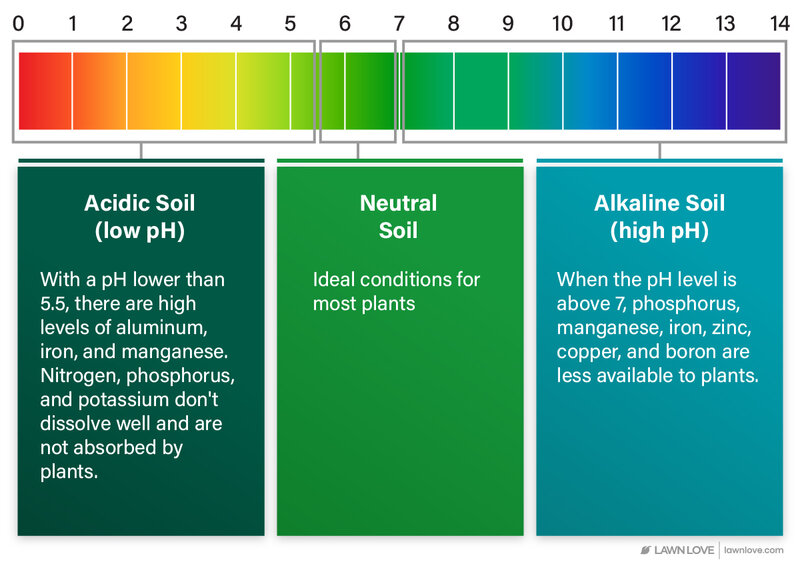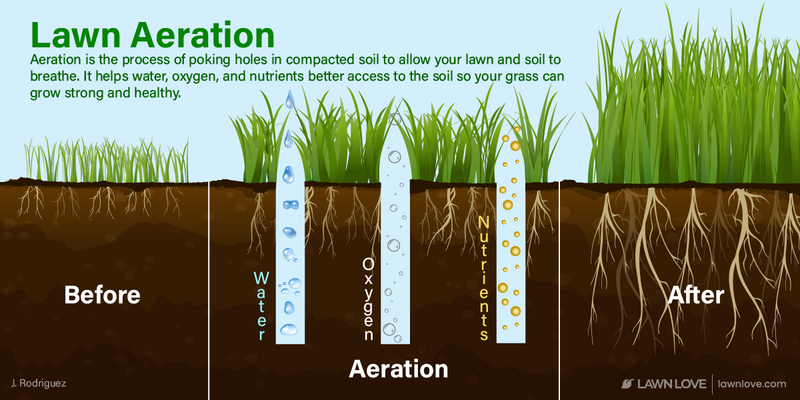
When a healthy lawn fades to yellowish-green, you might assume the soil has a nitrogen deficiency. But if your turf is struggling with iron chlorosis, sprinkling nitrogen fertilizer on the lawn only makes things worse. Iron chlorosis is an iron deficiency, and we’ll show you how to treat it without damaging your lawn.
When correcting a yellow lawn, don’t play a guessing game — perform a soil test. Let’s uncover how to identify iron chlorosis in the lawn and how to correct it.
What is iron chlorosis?
Iron chlorosis occurs when plants don’t receive enough iron from the soil. It’s a common problem for turfgrass, trees, and shrubs. Symptoms usually begin in spring when new growth appears.
What causes iron chlorosis?
Turfgrass may experience iron chlorosis because the soil is iron-deficient, or soil conditions make the iron unavailable, such as high soil pH or compaction.
Chlorotic grass fades to yellow because iron is needed to make chlorophyll (the pigment that gives grass its green color). The grass can’t photosynthesize without chlorophyll, eventually leading to poor strength and vigor.
How to identify iron chlorosis in the lawn
The tricky thing about iron chlorosis in the lawn is that it mimics the symptoms of other lawn ailments, particularly nitrogen deficiency. Here are some tips to help distinguish between the two nutrient deficiencies:
| Iron chlorosis | Nitrogen deficiency |
| Iron chlorosis symptoms appear in new growth. If the uppermost leaves turn pale green or yellowish-green, it’s likely iron chlorosis. | Nitrogen deficiency symptoms appear in old growth. If the lowermost leaves turn pale green or yellowish-green, it’s likely a nitrogen deficiency. |
| If it’s iron chlorosis, the grass blade’s vertical veins may appear a darker green than the surrounding leaf tissue. | Grass blades with nitrogen deficiency symptoms don’t have dark green vertical veins. Instead, the discoloration is uniform. |
If either deficiency is severe, the yellowing may spread to the whole blade, making identification difficult. As iron chlorosis worsens, the grass may appear almost white.
Performing a soil test is the best way to determine whether your lawn is suffering from a lack of iron. Contact your local university or cooperative extension to learn more about laboratory soil testing options and how to prepare your soil sample.
Although DIY soil-test kits are available, we don’t recommend using them to diagnose and treat your lawn for iron chlorosis. DIY soil tests don’t provide enough information about the best amendments for your soil type and turf type. Some DIY soil tests won’t even measure iron levels in the soil.
And remember, adding nitrogen worsens an iron deficiency. You don’t want to turn it into a guessing game.
How to treat iron chlorosis in the lawn
Before treating your lawn for iron chlorosis, you need to test your soil. Why? Because a soil test will reveal whether you need to add more iron to the lawn or lower the pH with sulfur. In some cases, you may need to apply both.
A soil test also will recommend the appropriate amount of product per 1,000 square feet, depending on your soil type and turf type.

Your soil test may recommend the following treatments:
If the soil pH is too high, a soil test may recommend applying elemental sulfur to the lawn. Sulfur lowers the pH of alkaline soil, making it more acidic. When the soil is acidic, iron is more soluble and more available to the grass.
If the soil is iron deficient, a soil test may recommend applying a product containing iron to correct the deficiency. Always refer to the product label for application instructions, as some iron products are best combined with water and applied as a foliar spray.
Pro Tip: A good time to apply these amendments is after core aeration. Aeration will expose the soil, relieve compaction, and help the roots uptake the available iron. Aeration for warm-season lawns is best performed in summer. The best time to aerate cool-season lawns is in the fall.
How to prevent iron chlorosis in the lawn
Iron chlorosis occurs in the lawn when iron levels are low, or soil conditions prevent roots from absorbing iron. Cool, wet conditions also can trigger iron chlorosis symptoms, such as heavy rainfall or overwatering.
By taking control of these factors, you can help prevent iron chlorosis in the lawn:
Irrigate less often
Overwatering cool soil is a recipe for intensifying iron chlorosis. You can help avoid these wet conditions by watering your lawn the right way.
The trick is to water less often and for long periods. This method encourages the lawn to develop a deep root system and allows the grass to dry between waterings. Watering too often and for short periods encourages a shallow root system, and it doesn’t give the lawn a chance to dry.
Most established lawns only need 1 to 1.5 inches of water a week, so don’t go overboard. It’s better to water the lawn deeply twice a week than lightly water every day.

Aerate the lawn
When the lawn’s soil is compacted, the turfgrass roots lose access to water, oxygen, and nutrients. As a result, the roots can’t uptake available iron in the soil.
You can relieve compacted soil with a core aerator. Even better, aerate the lawn regularly to prevent soil compaction from occurring in the first place. If your yard has heavy clay soils, perform aeration once a year. If your lawn’s soil is sandy or doesn’t compact easily, aerate once every three years.
The best time to aerate warm-season lawns is in summer. Fall is the best time to aerate cool-season lawns.
Test soil regularly
The secret to keeping iron chlorosis in check is to perform regular soil tests. If the pH starts to rise and create alkaline soil, follow the test’s recommended instructions, which will most likely be to apply sulfur. If the iron levels drop, apply a product containing iron.
By staying on top of your lawn’s soil health, you can help ward off iron chlorosis and other nuisance lawn ailments.

What grasses are susceptible to iron chlorosis?
Iron chlorosis affects a variety of grasses, including:
Keep in mind that grasses of the same species can react differently to iron chlorosis. For example, the St. Augustine grass cultivar ‘Floratam’ is less likely to show iron chlorosis symptoms than other St. Augustine grass varieties.
Turfgrass isn’t the only plant in your landscape that can suffer from an iron deficiency. Your prized trees and shrubs are also vulnerable.
Give your lawn expert care
No one wants to look out their window and see a yellow lawn. But filling up the weekends with hours of lawn care sounds worse. Hire a local lawn care professional who can save your dying turf and protect it from future stressors, including weeds, pests, and diseases. Enjoy your beautiful, green lawn without lifting a finger.
Main photo credit: Courtesy of Kansas State University Research and Extension